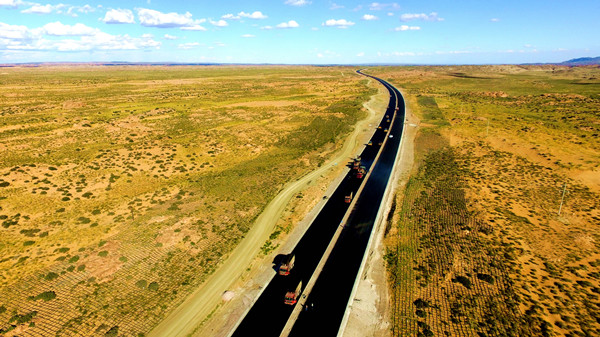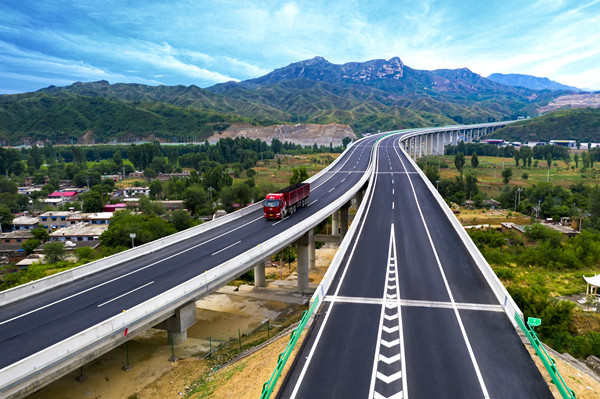The Beijing-Urumqi Expressway
One of China's seven national highways starting from Beijing, the capital, and an artery of the Belt and Road Initiative, the Beijing-Urumqi Expressway is the world's longest highway running through the desert and the Gobi area.
Its section between Linhe in North China's Inner Mongolia autonomous region and Baigeda in Gansu province is the fastest way to transport freight between Horgos port in Xinjiang and Tianjin port, which efficiently connects the ancient Silk Road with the Maritime Silk Road.
The 93.45-kilometer Jilantai connection line, running through the east Alxa League protection area, is significant to improving local traffic conditions and promoting economic and social development.
What's more, the line also contributes to the livelihoods of herdsmen in affected areas.

The Beijing-Urumqi Expressway is the world's longest highway running through the desert and the Gobi area. [Photo/sasac.gov.cn]
The Taihang Mountains Expressway
Running through the Taihang Mountains, the Taihang Mountains Expressway passes five cities and 19 counties in North China's Hebei province and connects with another 11 highways and dozens of national and provincial highways.
An artery linking Beijing, Tianjin and Hebei, the entire line connects 53 scenic spots at 4A level and contributes to poverty alleviation, benefiting 7.4 million people.
It's worth mentioning that the expressway plays a significant role in promoting traffic integration and coordinated development of the Beijing-Tianjin-Hebei region, relocating all functions non-essential to Beijing's role as the nation's capital to neighboring areas, driving economic and social economic development in affected areas, and boosting development and sharing of regional resources.
Eight engineering companies, five professional enterprises and more than 10,000 CSCEC workers participated in the project.

The Taihang Mountain Expressway benefits poverty alleviation of 7.4 million people in affected areas. [Photo/sasac.gov.cn]